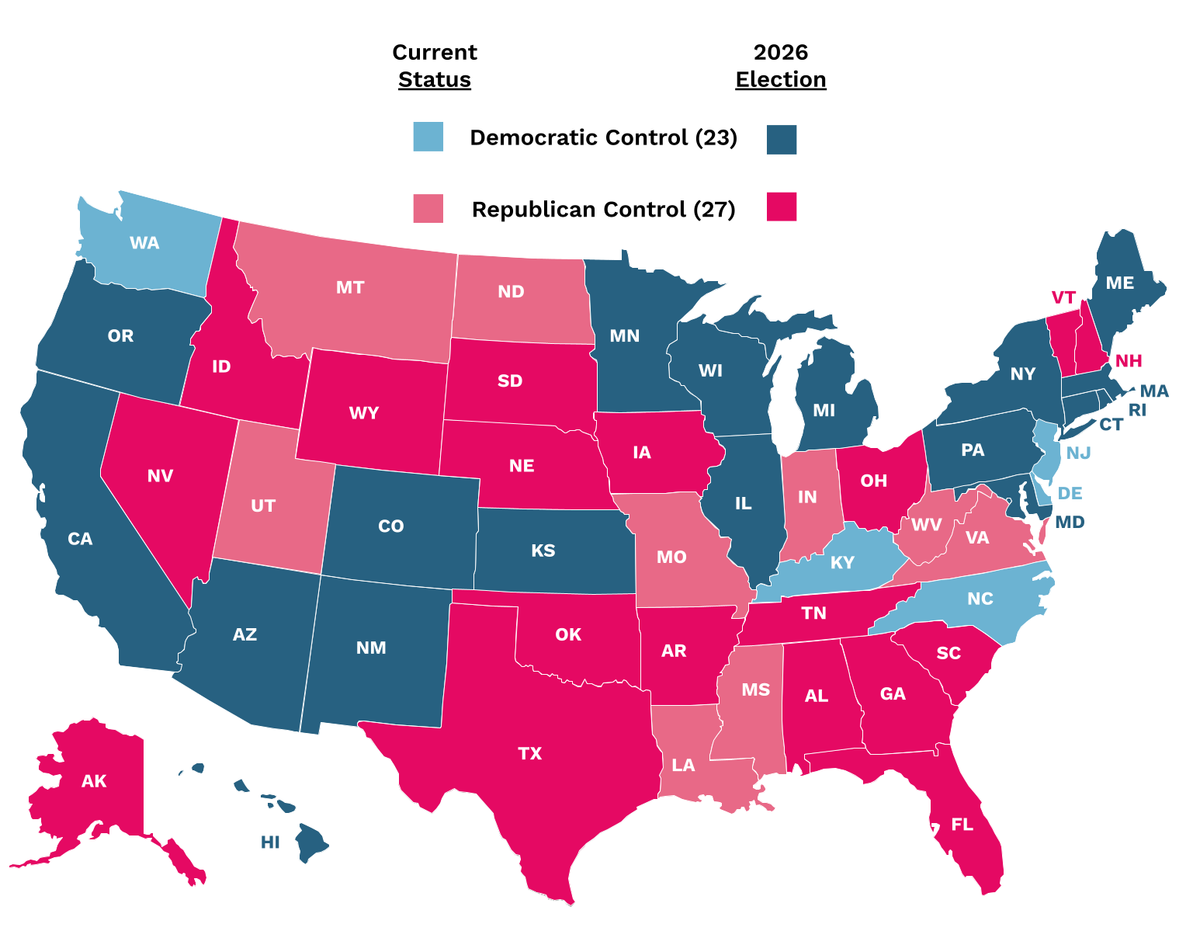
State Government Affairs, Elections & Campaigns
How Lieutenant Governors Are Selected (And Why It Matters)
December 10, 2025 | Bill Kramer
April 22, 2025 | Bill Kramer

Key Takeaways:
The latest gubernatorial approval ratings are out from our friends at Morning Consult. When we last checked in on how governors were faring last year, Vermont Gov. Phil Scott (R) maintained his long-held title as the county’s most popular governor, but there were questions about whether he’d run for a fifth two-year term in office. He did, and he easily won that fifth term last November. And he remains the governor to beat in approval ratings, even if he’s not at the highs he reached last year. Gov. Scott has a 75% approval, down from 81% last year. But that puts him in line with the 76% approval he received from Vermonters in 2023.
A key difference in this year’s ratings is Morning Consult only released net approval ratings publicly instead of the full approval numbers. These are two slightly different polling measures. An approval rating represents the percentage of people who approve of the governor’s job performance. For example, 75% of poll respondents said they approve of how Gov. Scott is handling his job, so Gov. Scott has a 75% approval rating. A net approval rating, on the other hand, is calculated by subtracting the percentage of people who disapprove from the percentage who approve. In Gov. Scott’s case, while 75% approve, another 17% say that they disapprove of the job the governor is doing, with 8% telling pollsters that they have no opinion either way (undecided). Therefore, Gov. Scott’s net approval is +58 (75% - 17% = 58%). The net approval rating provides a more complete picture of public sentiment since it accounts for both positive and negative opinions.

Rounding out the top 10 is an even split of Democrats and Republicans. Two years ago, only two Democrats cracked the top ten in gubernatorial approval ratings, so this is a solid improvement on their behalf. Those two remain in the top ten (Kentucky’s Gov. Beshear and Connecticut’s Gov. Lamont) but are joined by Governors Green (HI) and Moore (MD) and first-year Gov. Josh Stein in North Carolina. Two Republican first-year governors are enjoying a honeymoon period as well with Gov. Armstrong (ND) and Gov. Rhoden (SD) as the second and sixth most popular governors in the country.
On the other end of the spectrum, Democrats are also crowded in the bottom five with Governors Hochul (NY), Mills (ME), Kotek (OR), and McKee (RI) receiving net approvals of 10% or lower. Texas Gov. Abbott (R) has the same approval rating as Gov. Hochul at 10%. But the only governor in the country that’s actually underwater (a negative net approval) is Iowa’s Gov. Reynolds. And in a surprise move (although maybe less surprising if you were watching the approval ratings), Gov. Reynolds announced last week that she would not be seeking a third term in office next year.

Of course, we have elections coming up. This year, we won’t have any incumbents up for election, as both New Jersey’s Gov. Phil Murphy (21% net approval) and Virginia’s Glenn Youngkin (20%) are term-limited. And in 2026, 36 governor seats will be up for election. At least 16 of those 36 seats will be term-limited, so if you include Iowa, we’ll have at least 17 open seats, leaving 19 incumbents at least eligible to run for reelection in 2026. So the numbers above will be a leading indicator of how those incumbents might fare next year.
This article appeared in our Morning MultiState newsletter on April 15, 2025. For more timely insights like this, be sure to sign up for our Morning MultiState weekly morning tipsheet. We created Morning MultiState with state government affairs professionals in mind — sign up to receive the latest from our experts in your inbox every Tuesday morning. Click here to sign up.

December 10, 2025 | Bill Kramer
-d868d2-400px.jpeg)
July 1, 2025 | Maggie Mick

June 23, 2025 | David Shonerd